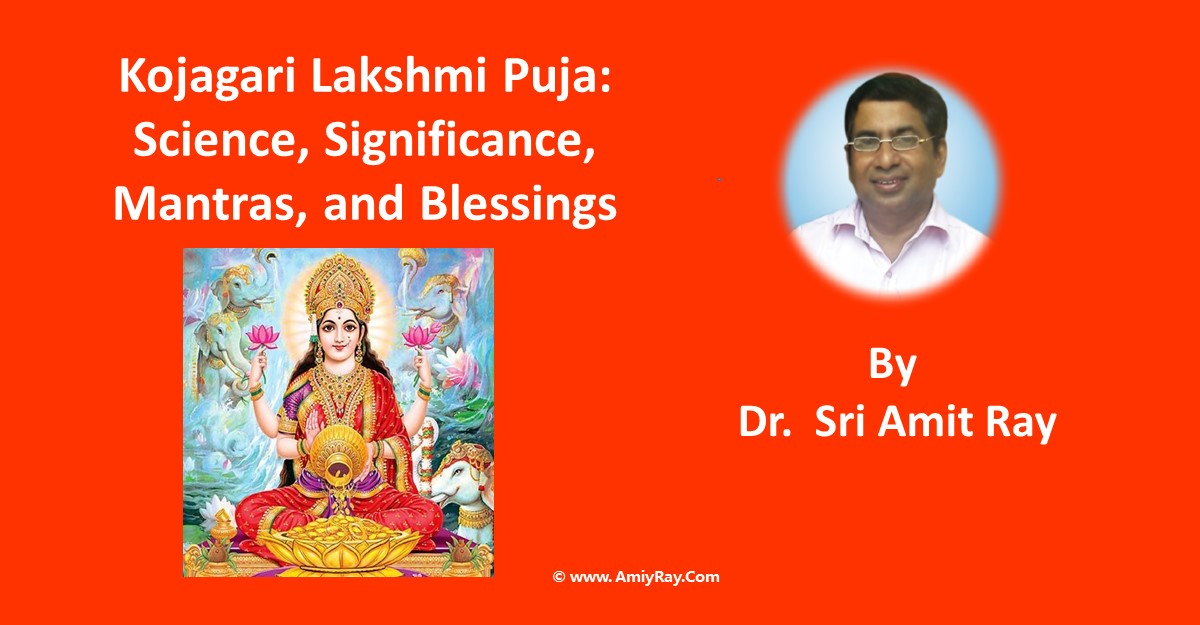Kojagari Lakshmi Puja: Science, Significance, Mantras and Blessings
The Kojagari Lakshmi Puja festival is celebrated on the full moon night of the Hindu lunar month of Ashwin, which typically falls in the month of October. Generally, full moons are considered powerful times for meditation, introspection, and inner work. The October full moon can shape conscious discipline behavior in our energy field.
The first full moon following the fall equinox is known as Kojagari Purnima. “Kojagari” is a term derived from the Sanskrit language and is commonly used in the Indian state of West Bengal, Asam and some other parts of India. This Ashwin full moon festival known as “Kojagari Lakshmi Puja”, “Kojagari Purnima”, or “Sharad Purnima.” The word “Kojagari” itself means “who is awake”, “who is aware” or “who is awake at night.”

Significance of Kojagari Lakshmi Puja
The phrase “who is awake” or “who is aware” holds deep spiritual and metaphorical significance, touching upon various aspects of success, prosperity, self-discipline, and morality. In humna body there are 114 chakras. The influence of this full moon is on the “soma chakra” (near the crown chakra). This chakra offer a holistic perspective on human well-being and spiritual growth.
- Success and Prosperity: Being “awake” or “aware” in the context of success and prosperity refers to a state of mindfulness and consciousness.